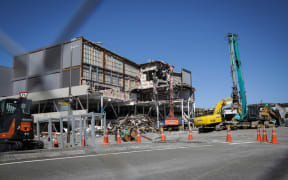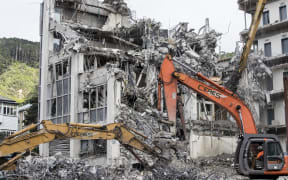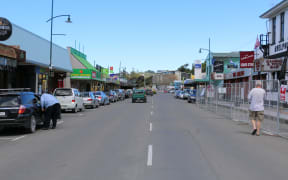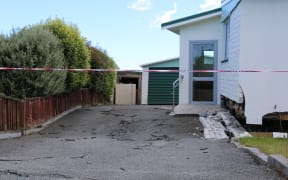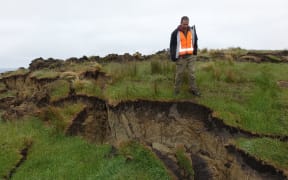Civil Defence delays held up the red-stickering of damaged homes at the epicentre of last November's earthquake.
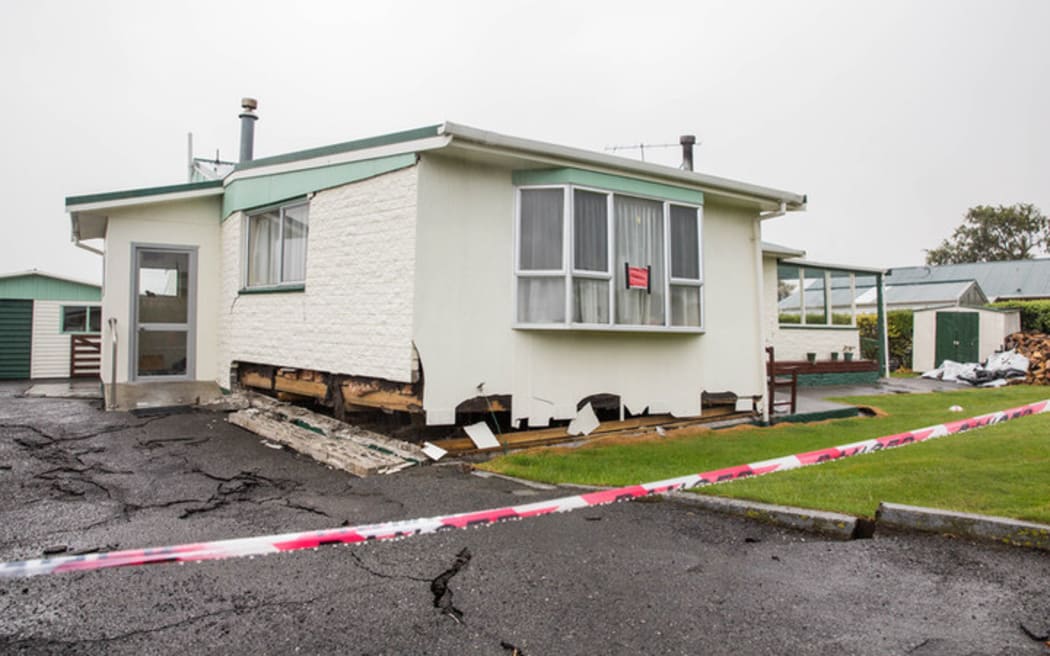
none Photo: RNZ
Four hundred building inspectors had been trained to do assessments after the 2011 Canterbury quake but North Canterbury had to do with few of them for days despite it being the hardest hit area in the November quake.
Hurunui District Council's building team leader Kerry Walsh said he never got all 40 inspectors he asked for, had to wait for days for those that did come, and then was told by Civil Defence that the nationwide building inspector resource was "exhausted".
Meanwhile, he'd had to turn down offers of help that hadn't gone through Civil Defence.
"We didn't get the resources we were after," he said. "Certainly the numbers didn't come through when they were needed.
"It was very frustrating from my point of view because I had a number of councils ringing me wanting to send building officers but they hadn't had the approval to send them."
The checks on 3500 homes took three and a half weeks, when they should have taken two, he said, and people could have gotten back into their homes and farms sooner.
Mr Walsh has written about it in the latest Building Officials Institute of New Zealand (BOINZ) magazine, under the title 'Building operators post-disaster - How to get it wrong!'

Building Officials Institute of New Zealand chief executive Nick Hill. Photo: Supplied / BOINZ
Canterbury Civil Defence controller Neville Reilly denied there were any delays.
"I'm confident we did everything we could do. We can always look to improve things, but I'm confident that our group processed those requests as quickly and as well as they could do."
Mr Reilly did not explain why, when Civil Defence said it needs two days' notice of requests for extra building officers, Hurunui was still waiting after a week.
BOINZ chief executive Nick Hill had to field calls after the quake from building officials outside Hurunui who knew how quickly hundreds of inspectors were sent into Christchurch after the 2011 quake. They were asking why more was not being done in North Canterbury.
"It was a surprise to me," said Mr Hill, who has now raised it with Civil Defence and the Ministry for Building, Innovation and Employment.
Kerry Walsh freely admitted he himself could have done better. Neither of his council's two building officers had taken up the free quake-assessment half-day training that MBIE introduced after 2011. So instead, at 2.30am after the quake, Mr Walsh was quickly reading the MBIE assessment manual so he could send his officers out come daylight.
He then had to copy off thousands of red, yellow and green placards to stick on buildings.
Builders and industry-trained people began offering help. For the first five or six days he had seven teams of two out on assessments, but they were getting exhausted. Mr Walsh said it was clear now he should have called for outside help much sooner.
He had been taking up random offers of help from other councils, but then was told to stop as Civil Defence had to approve them all.
He then waited through the second week after the quake for Civil Defence to green-light his request for 40 officers.
"This request sadly appeared to go un-noticed," Mr Walsh wrote. "We planned for an additional 20 teams to start in two days but no inspectors arrived and I still had not heard anything re the request.
"I did receive a few calls from council team members... so I know a few people had received the request... Some inspectors just arrived out of the blue with no notification and others arrived without the tools for the job - for example, a vehicle, which meant we had to run around finding 10 vehicles."
Eventually, he said, after "muddling along... I received a call... stating that 'the inspector resources has been exhausted' and that private contractors/consultants were being looked at... [but] I knew there were at least 1000 BCOs [Building Control Officers] in New Zealand and that there were 400 trained assessors out there, but we only had 15 of them."
In the end, he turned to MBIE and BOINZ, and got some help, managing at the peak to put out 15 teams of two doing 200 assessments a day.
"Probably the three and a half weeks it took us to get to every last house is not good enough, you know, we're really wanting to get there quicker.
"Residents are getting a bit grumpy because they want to know whether their houses are safe."
Also, without enough workers, those he did have were burning out, while at the same time having to do a crucial job.
Mr Reilly said he was not rejecting what Mr Walsh and BOINZ were saying happened, but also repeatedly said there were no delays.
"We were processsing those requests as well as we could, as quickly as we could, a large number of requests for all sorts of resources for Hurunui and Kaikōura... they had a high priority, I mean, we got building inspectors there as soon as we could - everybody wants more resource."
In a statement MBIE said: "Under the National Civil Defence Emergency Management Plan 2015, local authorities can ask for resources from local and regional civil defence groups. MBIE can coordinate building management support, but this must be requested by the Director of MCDEM or the National Controller of the emergency. During the Hurunui event MBIE responded immediately on receiving the request from the National Controller."
Mr Hill said the rural community could rightly argue it was disadvantaged. He said the law needed reviewing to see if it allowed Civil Defence to work closely with building officers.

